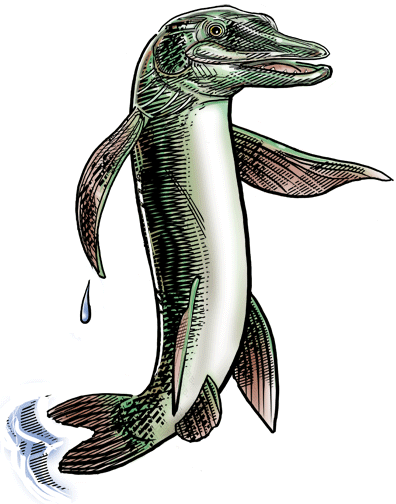 Wisconsin Lakes Partnership 2012 Convention Archive
Wisconsin Lakes Partnership 2012 Convention Archive
Wednesday
Sunrise Concurrent Sessions 1
April 11, 2012
8:00-8:50 am
All Things Invasive
Wetland Invasive Plants & Wisconsin's WISpecies Strategic Plan
This session will both introduce many WIP that are threatening and invading wetlands across the state, and present a new, broad plan for minimizing their negative impacts. In order to reduce the likelihood that WIP will harm your wetlands and compromise the waters of your lake or stream you must first learn to recognize them, including distinguishing them from similar native species. Come prepared to learn about what to watch out for, and leave with a field handout with pictures and names of 32 WIP of most concern. Wisconsin has long needed a broad strategy for reducing the effects of wetland invasive species (WIS) and a new plan has been developed as part of the Wisconsin Wetland Team’s goal of “Reversing the Loss” of wetlands in the state. It should help by identifying needed WIS control steps, as well as identifying and helping to mobilize the resources needed to be successful. It should also help recruit more citizens to help in control efforts by showing them that a comprehensive strategy is in place, and how they can fit in. The strategy is built around five goals: preventing importation and dispersal of WIS; early detection and rapid elimination of new infestations; effective control of established WIS; increasing effective outreach to involve more citizens, and expanding WIS research. Come see where you fit into the plan and hear about several WDNR projects underway. Plan copies will be handed out at the session, or download the document from a link at
http://dnr.wi.gov/wetlands/invasives.html.
Presenter: Brock Woods, Purple Loosestrife Biocontrol Coordinator, WDNR
Native Plants & Animals
The Wisconsin Shoreland Restoration Project
What are the ecological benefits of shoreland habitat restoration? This project assessing this question measures wildlife diversity before, during, and after restoration activities on lakes in northcentral Wisconsin. These surveys, conducted over 10 years, will be compared to undeveloped lakes and developed lakes without restorations. Learn about this project's fascination progression and findings with wildlife and habitat.
Presenter: Mike Meyer, WDNR Research Scientist
AIS Research
Examining the Effects of Milfoil Weevils and Sediment Characteristics on Eurasian Watermilfoil Populations
Lake Joanis is a 23-acre lake in Schmeeckle Reserve, Stevens Point, Wisconsin, surrounded by natural shoreline, making it an ideal candidate for biological control of Eurasian watermilfoil. This presentation will cover studies done with weevils and Eurasian Water Milfoil in Lake Joanis, concerning population data, current statewide research of weevils, and the mass rearing protocol for use by citizen scientists.
Presenters:
- Amy Thorstenson, Regional AIS Coordinator, Golden Sands RC&D Council
- Paul Skawinski, UW-Stevens Point
Advocating for Lakes
Tips for Effective Communications
Come to this session to learn how to frame an issue and craft it into a compelling message that the media will cover and your audience will hear. We will step through seven key questions to guide you through the process of communicating on an issue. Knowing the answer to these questions will help you prepare messages that will resonate with your audience and advance your goals.
Presenter: Michael Engleson, Wisconsin Lakes Communications Director
County Land & Water Resources
Partnering with LWCDs - The Best Kept Secret
Land and Water Conservation Departments throughout Wisconsin actively work on water resources. This presentation will provide an overview of the numerous ways that lake citizens and community groups can partner in this work. Learn the role of LWCD's in working with farmers to prevent soil erosion and manure pollution, how we work with lake citizens on shoreland erosion control, how we work with lake groups on aquatic plant management planning, and much, much more. LWCD's work with a variety of partners to protect and enhance lake in Wisconsin. Come learn how you can join them so that they are no longer Wisconsin's best kept secret.
Presenters:
- Patricia Cicero, Jefferson County LWCD
- Carolyn Scholl, Vilas County LWCD
Adventures in Lake Management
Preserving a Gem for Future Generations: Bony Lake Conservation and Restoration Project
Utilizing a $100,000 WI DNR Lake Protection Grant, Bony Lake property owners partnered with Bayfield County LWCD, WI DNR staff, Sigurd Olson Environmental Institute staff and students, local greenhouse owners and landscapers, and local conservation club members to accomplish an array restoration objectives. Bony Lake is a 191-acre, spring-fed drainage lake; the shoreline is fully-developed with 54 privately-owned properties.
Since July 2007, 50% of the property owners have been involved in some aspect of the project. Shoreland/upland restoration work has been completed on 10 properties. Coarse Woody Structure (often called "Fish Sticks") has been installed along the shorelines of 10 properties to improve near-shore habitat. Additional owners have met with LWCD staff/local landscapers to evaluate their properties; they now have specific recommendations and design plans for future restoration work. Educational events have been held; materials have been created; others are being planned.
Saving our Lakes for future generations will be a never-ending process. Successes will rarely occur without challenges and hurdles. We'll share what we've learned "along the way". If you bring your questions and challenges, perhaps we can explore solutions together!
Presenter: Carol LeBreck, Bony Lake
